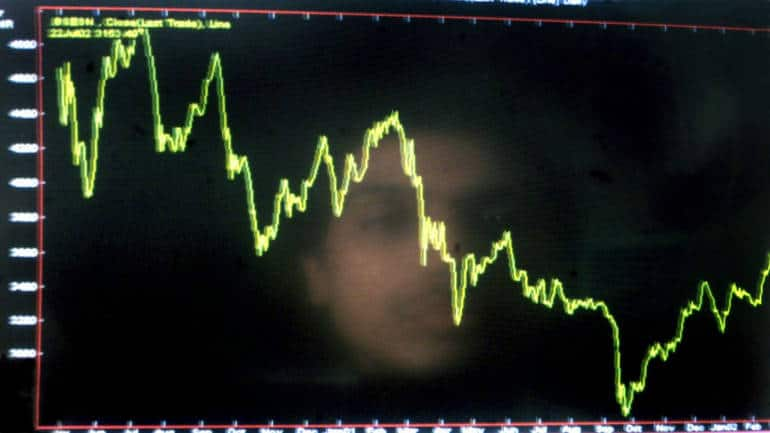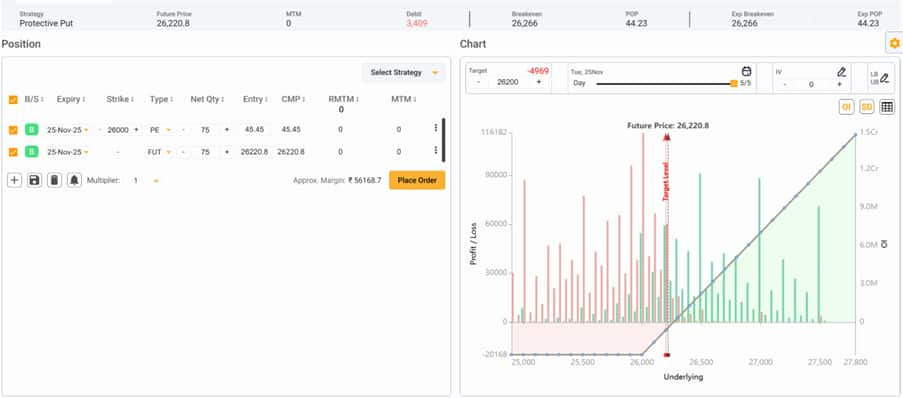Un-complicating Options trading for short term trades: Shubham Agarwal
There is a belief that if you can create complicated multi-leg strategies, you’ll be able to benefit more from the market but at times this is inverse.
SHUBHAM AGARWAL | 13-Feb-21
Reading Time: 3 minutes

Do complex options strategies with multiple legs have an edge over single options? Let’s understand.
With the growing popularity of Options over the past few years, we have witnessed a huge shift in traders resorting to options over futures due to its benefits not limited to lower capital, natural leverage, inherent risk management, etc.
Our country has an extremely high number of population of traders following technical analysis which helps them in generating a forecast on the underlying. Taking those trades in futures was always straight forward but to benefit from those signals from the world of options, traders have always had a thought on the right way to migrate their systems to be Options Compatible.
There is a belief that if you can create complicated multi-leg strategies, you’ll be able to benefit more from the market but at times this is inverse.
Sometimes keeping it simple might be the best answer. If your signals from technical studies are short term i.e. up to 3 days, you need not need to know anything more than single options i.e. Long Call and Long Put . Below are some of the scenarios which take care of Greeks being in your favour. Since time is an extremely important parameter in the world of options, our scenarios are based on them.
First two weeks of the monthly expiry
This is the zone when the theta decay is slow which means we need not need a complex strategy to seek theta compensation and, in this zone, naturally we have an edge with time.
A trading signal in this zone with up to 3-4 days of holding period will mostly have an outperformance with a simple Single Option over spreads. Let’s further sub-divide this into two zones:
Monday to Wednesday
The best days to initiate trades in the first half of the expiry are Monday to Wednesday morning when you can have a full 3-4 trading days cycle without being interrupted by a weekend/trading holiday. Trades initiated in this time can be squared off within the week itself providing full potential for the signal to mature with lowest theta hit.
Thursday to Friday
Since Thursday to Friday is interrupted by a weekend/trading holiday, it does not allow you a longer time. Remember, even weekends will have theta decays making it mathematically lower in probability for a trade to make money in a carryover weekend trade. Hence, trades initiated on Thursday should be squared off by Friday mid-day and trades initiated on Friday morning should ideally be squared off by 2 pm on the same day before the theta effect starts hitting the trade adversely.
Third week of the Monthly Expiry
This time frame will have an accelerated theta decay and hence, it demands our trading timeframe to be shorter. A trade initiated in this zone should be intended to be held for up to 2-3 days with a single option. Like above-explained scenarios, Monday to Wednesday will be the best zone to initiate a trade providing potential to hold the trade and Friday 2 pm should be the cut-off for trades initiated on Thursday & Friday morning.
Expiry Week
This timeframe is the trader’s favourite, and a lot of activity is witnessed, but forecast on underlying is still independent, and we need to place our trades right. If trading in the nearest expiry, this time zone only allows us to hold a trade for 1-2 days to retain the edge of a single option.
Trades taken on Monday should be intended to be squared off on Tuesday during the day and trades initiated on Tuesday should be intended to be square off by Wednesday first half.
Trades initiated on Wednesday have theta decay acceleration to a high pace and hence should be targeted only for intraday. Thursday’s might be too late to run a forecast based trade and should be avoided.
Since it might not be practically possible to squeeze in our technical models for such signals, the best alternative would be to trade the next expiry which will again allow the trade to be held for up to 3-4 days and shifting it to the next cycle where theta decay is lowest.
Summary
Trading single options have enough potential to outperform a complex alternative if optimized for time and the above scenarios help you position the Single options is the right theta zones.
Learn and read more about option seller from Quantsapp classroom which has been curated for understanding of options trading from scratch, to enable option traders grasp the concepts practically and apply them in a data-driven trading approach.
Recent Articles

Best trending option trading strategies: Shubham Agarwal
29-Nov-25

3 best ways to hedge using Options: Shubham Agarwal!
22-Nov-25

When in doubt to write, do Iron Fly: Shubham Agarwal!
15-Nov-25

Identify potential turning points with advance-decline: Shubham Agarwal
08-Nov-25

Slow and spreads more efficient: Shubham Agarwal
01-Nov-25

Use implied volatility as probable top finder: Shubham Agarwal
25-Oct-25

How to trade potential breakout post consolidation: Shubham Agarwal!
18-Oct-25

Use Options OI for intraday trading: Shubham Agarwal
11-Oct-25

SHUBHAM AGARWAL is a CEO & Head of Research at Quantsapp Pvt. Ltd. He has been into many major kinds of market research and has been a programmer himself in Tens of programming languages. Earlier to the current position, Shubham has served for Motilal Oswal as Head of Quantitative, Technical & Derivatives Research and as a Technical Analyst at JM Financial.
Recent Articles

Best trending option trading strategies: Shubham Agarwal
29-Nov-25 09:32:00

3 best ways to hedge using Options: Shubham Agarwal!
22-Nov-25 09:11:00

When in doubt to write, do Iron Fly: Shubham Agarwal!
15-Nov-25 10:48:00

Identify potential turning points with advance-decline: Shubham Agarwal
08-Nov-25 10:35:00

Slow and spreads more efficient: Shubham Agarwal
01-Nov-25 10:35:00

Use implied volatility as probable top finder: Shubham Agarwal
25-Oct-25 09:56:00

How to trade potential breakout post consolidation: Shubham Agarwal!
18-Oct-25 09:20:00











